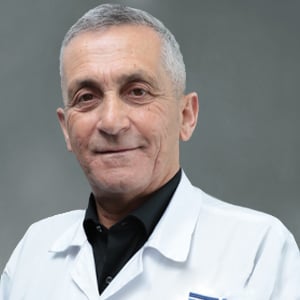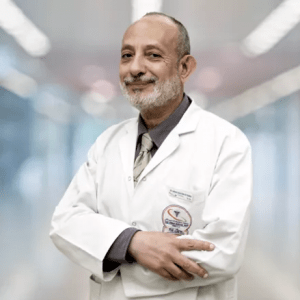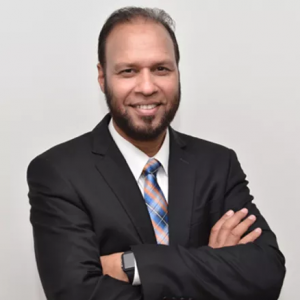Post-Traumatic Stress Disorder Treatment
Post-traumatic stress disorder (PTSD) is a mental health problem that usually develops in some people who have witnessed a traumatic event. The traumatic event may be life-threatening; or it may seriously affect their physical, emotional or spiritual well-being. The condition can affect individuals of all ages. Individuals who are suffering from PTSD usually have intense… Read More
Top Doctors For Post-Traumatic Stress Disorder Treatment Treatments
Top Hospitals For Post-Traumatic Stress Disorder Treatment Treatments
Post-Traumatic Stress Disorder Treatment
Post-traumatic stress disorder (PTSD) is a mental health problem that usually develops in some people who have witnessed a traumatic event. The traumatic event may be life-threatening; or it may seriously affect their physical, emotional or spiritual well-being. The condition can affect individuals of all ages. Individuals who are suffering from PTSD usually have intense and intrusive thoughts and feelings that last long after the event that caused the condition. The stress responses that may be seen in the condition include anxiety, guilt or shame about the event, as well as being in a depressed mood. They also have nightmares and vivid flashbacks of the event. They tend to avoid situations, places or activities that may remind them of that traumatic event. These symptoms cause distress to the person and will interfere with their daily activities.
What can cause PTSD?
Traumatic events that can threaten an individual’s safety or life are the cause of the condition. It does not have to be a single event; it could be long-running like abuse, living through a terrible condition like in war or conflicts. The trauma also does not have to happen to the individual; it could be something they witnessed. In some cases, people develop PTSD from hearing about a traumatic event that happened to a relative or loved one. Some examples of traumatic events include:
- Sexual assault or abuse
- Serious accidents
- War
- Verbal abuse
- Bullying
- Natural disasters
- Severe injury or illness
- The sudden passing of a friend, relative or loved one
- Conflicts
PTSD develops in about 5-10% of individuals who experience traumatic events at some point in their lives. It is unclear why some people respond differently to trauma, but research has shown that people with PTSD have abnormal levels of certain hormones and neurotransmitters. They also experience brain changes.
- Hormone and neurotransmitter changes – Research has shown that individuals with PTSD have normal to low levels of cortisol and elevated levels of corticotropin-releasing factor (CRF) despite their ongoing stress. CRF induces the release of norepinephrine, which increases the sympathetic nervous system reaction. Leading to increased heart rate and blood pressure as well as increased awareness and startle response. Also, the altered functioning of other neurotransmitter systems like serotonin, glutamate and gamma-aminobutyric acid have been observed.
- Brain changes – PTSD has been associated with changes in the functioning and anatomy of the brain. The size of the hippocampus reduces, the amygdala is overly reactive, and the medial prefrontal cortex which partly controls the emotional reactivity of the amygdala appears to be smaller and less responsive in people with PTSD.
What are the types of PTSD?
Two conditions are closely related to PTSD, they include;
Acute stress disorder – Usually occurring within the first month after the traumatic event, it is a short-term mental health condition. If the symptoms experienced last more than a month, they can then meet the criteria of PTSD.
Complex PTSD – This usually develops after the experience of chronic trauma, like long-term sexual or physical abuse, long-term domestic violence and living through war or a conflict. Individuals with this condition, in addition to having the symptoms of PTSD, also have issues regarding their emotion regulation, and they struggle with relationships and their sense of self.
What are the symptoms of PTSD?
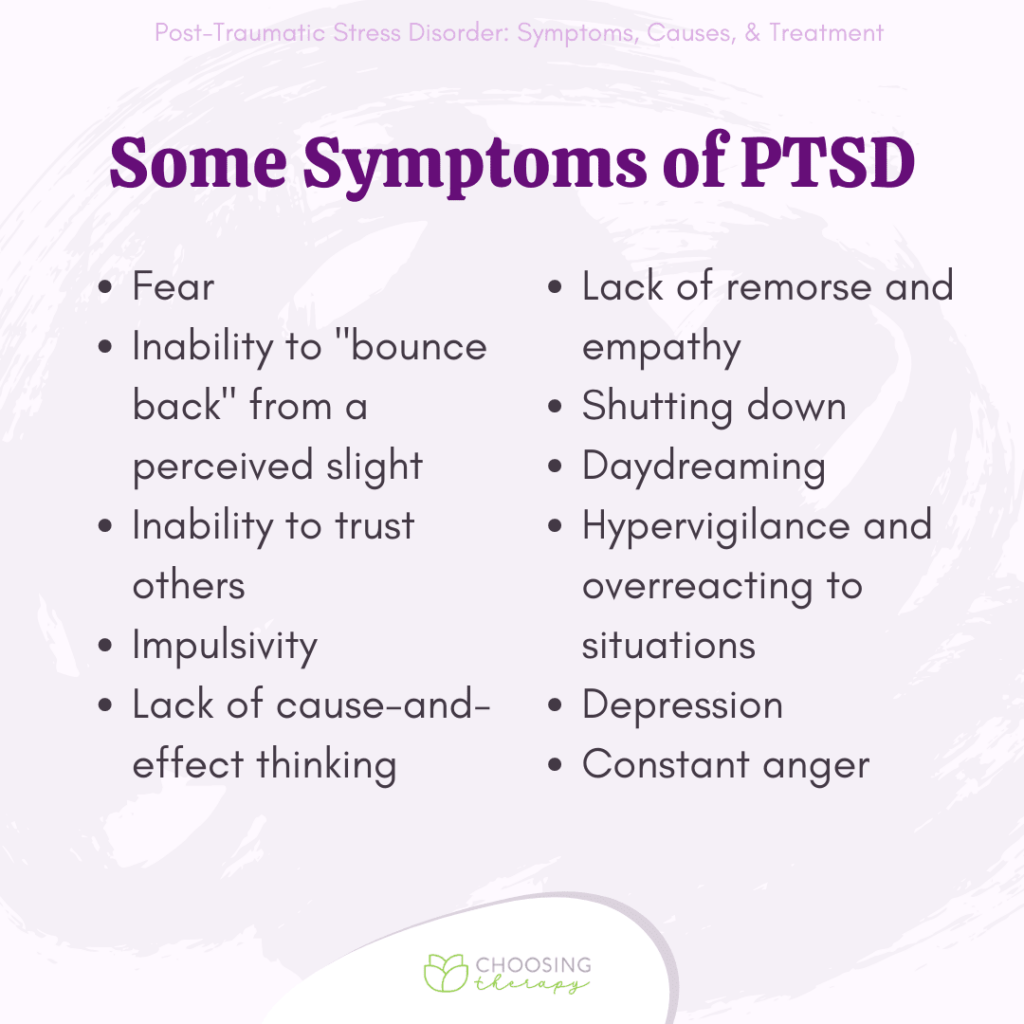
They may start as early as a month after the traumatic event. However, in some cases, it may be years after the event. The symptoms can affect the individual’s work, relationship or social situations. The symptoms have been grouped into four types, and they can vary from one person to another. They include the following.
Intrusive memories
The symptoms that are seen are:
- Upsetting dreams or nightmares about the event
- Severe mental discomfort or bodily reactions to everything that reminds the person of the event
- Recurrent, unwanted and distressing memories of the event
- Unwanted Flashbacks of the event
Avoidance
The symptoms may include:
- Attempting to avoid discussing or reflecting on the painful occurrence
- Avoiding places, activities, or people who remind the individual of the incident
Negative changes in thinking and mood
The symptoms observed are:
- Difficulty in experiencing positive emotions
- Feeling numb emotionally
- Feeling detached from family and friends
- Hopelessness about the future
- Negative thoughts about everything, including the world and their selves
- Difficulty in maintaining close relationships
- Memory challenges
- Lack of interest in previously enjoyed activities
Changes in physical and emotional reactions
The symptoms may include:
- Being easily frightened or startled
- Trouble with sleeping
- Trouble concentrating
- Overwhelming guilt or shame
- Irritability, aggressive behaviour, and angry outbursts
- Always being on edge
- Self-destructive behaviour such as drinking or driving too fast
In children that are six years or younger, symptoms may include;
- Nightmares that may or may not be aspects of the traumatic event
- Re-enacting the traumatic event or aspects of the traumatic event through playing
What are some of the complications of PTSD?
The following conditions are common in people with PTSD, and they can make the condition worse. They include:
- Mood disorders
- Neurological conditions
- Increased suicidal thoughts
- Anxiety disorders
How is PTSD diagnosed?
There is no specific test for this disorder. A healthcare provider will usually make the diagnosis after consulting with the patient and enquiring about their symptoms, medical history, exposure to trauma and their mental health history. They may also do a physical examination and prescribe diagnostic testing, such as blood tests, to determine whether the reported symptoms are the result of a physical ailment.
How is PTSD treated?
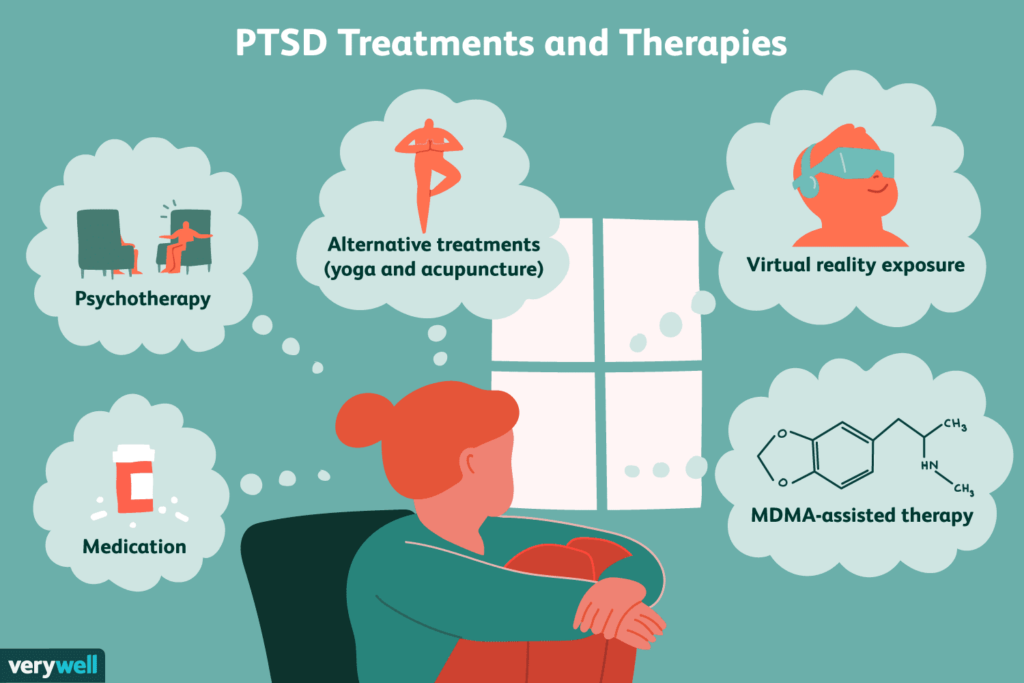
Psychotherapy or talk therapy is the main treatment for PTSD, especially forms of cognitive behaviour therapy. This therapy is usually administered by a trained and licensed mental health professional, such as a psychologist or psychiatrist. Specific forms of cognitive behaviour therapy for PTSD include:
- Prolonged exposure therapy – This uses repeated, detailed imaging of the trauma or progressive exposures to symptom triggers in a safe and controlled manner. This helps the individual face their fears, gain control of it, and learn how to cope with it.
- Trauma-focused CBT – This involves the individual learning how their body responds to trauma and stress. They will also identify and reframe problematic thinking patterns, and learn symptom management skills as well. This therapy also involves exposure therapy as well.
- Cognitive processing therapy – This therapy was specifically designed to treat PTSD. It is focused on changing the painful and negative emotions and beliefs due to the trauma. It also helps the individual confront distressing memories and emotions.
- Eye movement desensitization and reprocessing therapy (EMDR) – This involves the individual moving their eyes a specific way while they process traumatic memories. The goal of the therapy is to help the individual heal from the trauma or any other distressing life experience. While this therapy is relatively new, clinical trials show that this technique is effective and can help a person faster than many other methods.
- Group therapy – This involves the encouragement of survivors of similar traumatic events to share their experiences and feelings in a comfortable and non-judgmental setting. Family therapy may also be beneficial as challenges of the condition can affect the entire family.
Medications for PTSD
While there are no specific medications that are approved to treat PTSD, healthcare providers can prescribe certain medications to help in managing some of the symptoms seen in the condition, like;
- Medications for anxiety
- Antidepressants
Can PTSD be prevented?
The traumatic event cannot necessarily be prevented, but certain studies have shown that steps may help prevent PTSD afterwards. These are referred to as protective factors, and they include:
- Joining support groups after a traumatic event
- Seeking help from others, such as friends and family, following the occurrence.
- Having a healthy coping strategy after a traumatic event
- Learning to feel positive about the actions in the face of danger
- Helping others, especially if it is a traumatic event that affected a lot of people like a natural disaster

